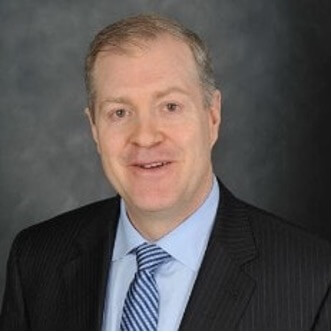
For corporate finance, a lesson from the pandemic period is to be more proactive in managing financial risk and thereby accelerate efforts to deal with longstanding challenges.
After COVID-19 struck around March 2020, companies went into a defensive crouch, focusing on liquidity and capital structure, said Amol Dhargalkar, managing partner at risk advisory and solutions firm Chatham Financial.

“As we move forward, treasury teams are focusing on what they can improve in terms of foreign exchange (FX), interest rate and commodity risk, playing much more offense than defense in their risk management programs” Dhargalkar said. “They're saying, 'We've learned a lot from COVID and we really need to improve risk programs before another crisis strikes.'”
In a survey conducted during Chatham's 2021 Financial Risk Management Summit in June, 57% of more than 100 senior treasury officials said that accurately capturing exposures was their companies' biggest financial risk management challenge. Next was designing effective hedging strategies, at 34%.
Wrangling Data
A key takeaway from the survey, Chatham says, is that it is particularly problematic in FX, where it “can still be challenging to accurately extract exposures from disparate technology systems or piece together a comprehensive picture from different regions and business units.”
As financial risks multiplied throughout the pandemic, they became increasingly costly to hedge, said Deloitte Risk & Financial Advisory partner J.H. Caldwell. Consequently, organizations are seeking to be more proactive in assessing where the challenges lie and “trying to address them now instead of remediation on the back end.”
Caldwell said the trend started three or four years ago but accelerated over the last year and a half, coinciding with adoption of new tools and technologies such as robotic process automation (RPA) and artificial intelligence (AI).
Fifty-seven percent of Chatham survey respondents said that when considering a given hedging strategy, matching the hedge to the underlying exposure was the most challenging aspect. In FX, the challenge to global companies often arises from having to aggregate data across affiliates to obtain a comprehensive view of the risks.
Technology and Teamwork
Dhargalkar said the challenge is even greater for commodity risk, because exposures may exist in systems in departments such as procurement that treasury may not have access to, and hedging them requires understanding supply-chain contracts and other nuances.
To proactively address FX risk, Dhargalkar said, companies are more aggressively pursuing technology solutions to aggregate data, sometimes in-house and sometimes using third-party solutions such as Chatham's.
He added that for commodity risk, it is currently less a question of technology and systems than making sure the correct stakeholders are communicating effectively.
“It's about interdisciplinary ownership of the risk, so you really need the right people in the room,” he said. “It's not about systems right now, but understanding at the business level where the exposures are.”
In a survey of 272 treasury professionals by the Association of Financial Professionals (AFP), supported by Marsh McLennan, 47% said that “the risk manager in their organization has grown into a more strategic role,” according to a September article by AFP director of treasury and payments services Tom Hunt. “The importance of the contribution of treasury professionals who manage macroeconomic risk, technology risk and financial risk has increased significantly.”
Hunt also noted, “While two-thirds of respondents indicate their organizations are placing a greater emphasis on risk management technology, the majority of practitioners are not fully confident that they are equipped with the necessary analytical tools and methodologies that allow them to forecast current and future risks.”
Business-Model Changes
The pandemic experience has only turbocharged the pre-existing objective of developing a more expansive view of risk exposures.
Joseph Neu, CEO and founder of NeuGroup, which organizes meetings and manages information forums for corporate treasury executives, said member feedback indicates that in response to the pandemic, companies are pivoting or changing business models, including entering new lines of business. He called it surprising that Chatham-survey respondents did not say such strategic changes triggered a review of their companies' risk programs, though 55% said the pandemic economic environment had negatively impacted their business models.
Neu contrasted that to cash-flow-forecasting programs, for which changes in the business have prompted significant reassessments of programs. He added that underscores the Chatham survey result that 51% do not see their risk management policies and practices well aligned across stakeholders and operational functions.
"This shows the need for more holistic approaches to financial risk management that starts with a better understanding of how the business is exposed, then managing risks generated by the business in alignment with the key stakeholders the risk management program aims to serve." Neu said.
Cost Pressures and Outside Services
Forty-eight percent said their top priority was improving the quality and timeliness of reporting, followed by a review of risk management cost and/or effectiveness, at 42%.
Asked how their companies' approach to risk management changed over the previous year, the largest percentage, 44%, cited an increased emphasis on cost management. That was followed by 31% marking an increased emphasis on quantification, while 25% said risk management has remained consistent.
“A common theme in 2021 treasury priorities is a focus on the cost-benefit analysis of various risk management activities, where costs can include transaction fees, forward points, staffing needs, and technology tools,” Chatham says, and “benefits are being quantified through measuring risk reduction levels.”

Caldwell agreed that that there is more pressure to manage costs, despite a reasonable assumption that budgets would have expanded to deal with new difficulties. The Deloitte partner attributed the emphasis on costs to global regulatory changes and the need for companies to meet the “highest common denominator across the board if they want a fail-safe system - and that's expensive.”
On that front, though, technology is providing some relief by easing access to third-party expertise. Anti-money laundering, for example, is a compliance issue all companies face. As an alternative to in-house hiring and training, they are turning to multilayered ecosystems that include third-party experts.
Caldwell noted that service centers and automation have long been available, but now there is a “new wave” of seeking outside resources. He added that major enterprise resource planning (ERP) systems now have treasury modules that link through software to third-party services.
“We've seen things like compliance-as-a-service and risk-as-a-service expanding into the ecosystem of a lot of these organizations, in order to try to counter some of the cost structure but pick up the expertise,” Caldwell said.